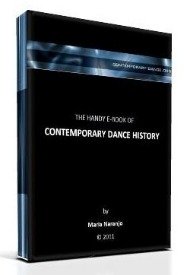How can anatomy provide help in the training process to become a successful dance performer?
by Anonymous
(No location given)
How can knowledge of the circulatory, respiratory, and the nervous system provide help in the training process to become a successful performer?
Comments for How can anatomy provide help in the training process to become a successful dance performer?
|
||
|
||
The handy e-book of CONTEMPORARY DANCE HISTORY:
The Dance Thinker is our occasional E-zine. Fill in the form below to receive it for free and join us.
Read:
"The Dance Thinker"
BACK ISSUES
Post contemporary dance announcements (workshops, auditions, performances, meetings and important news... it is free.)



